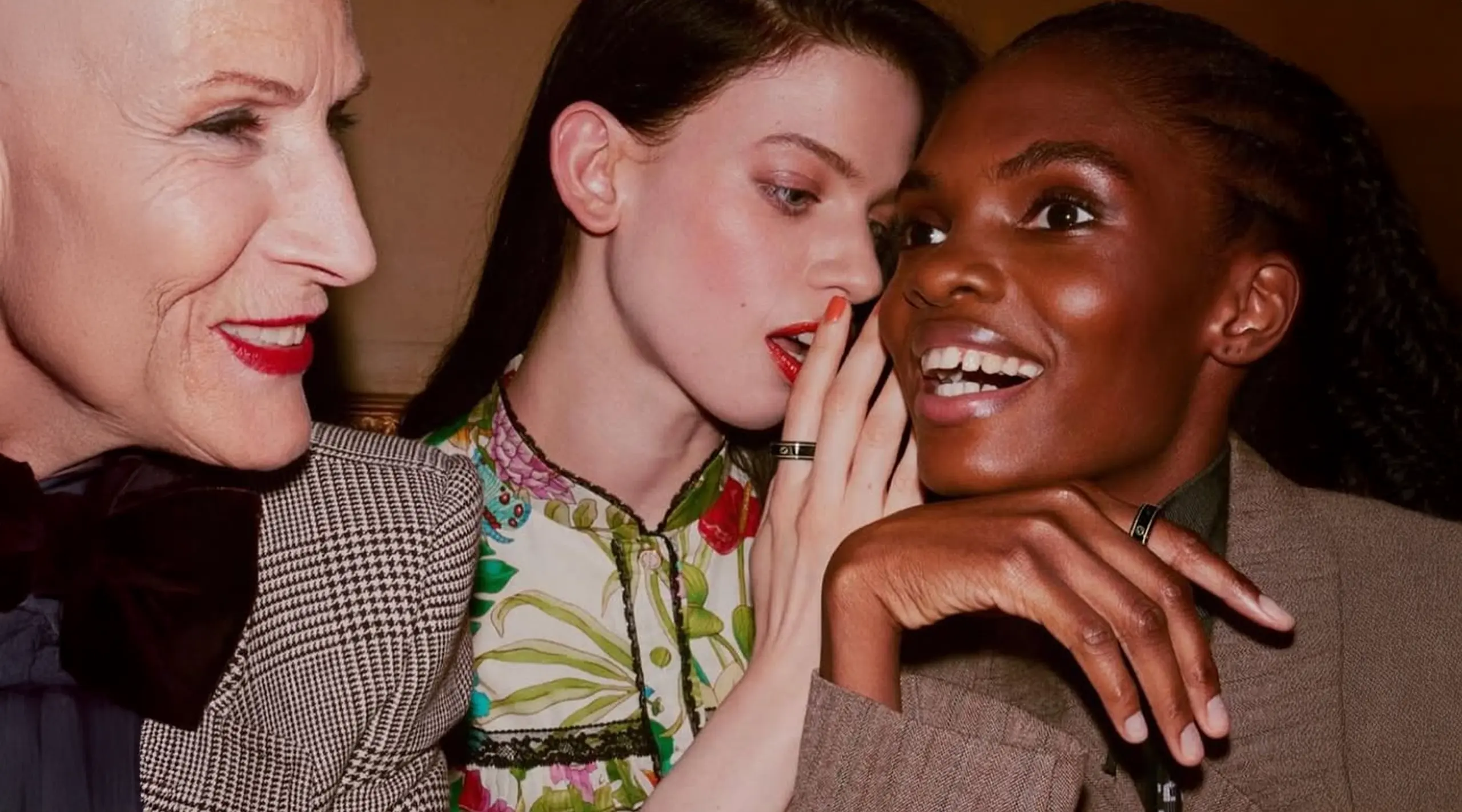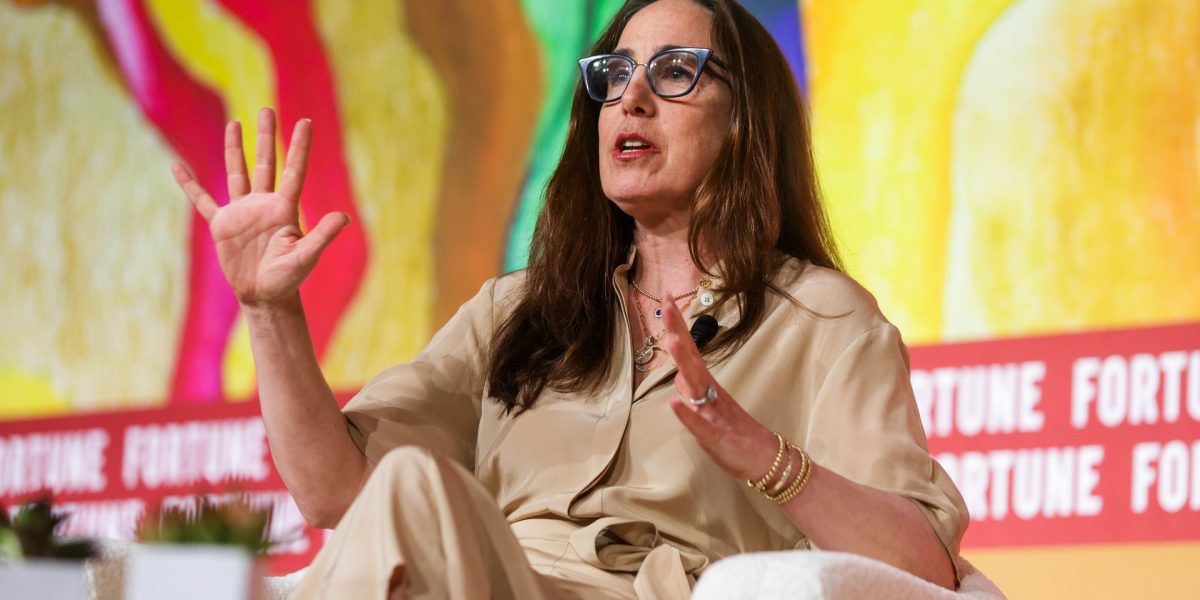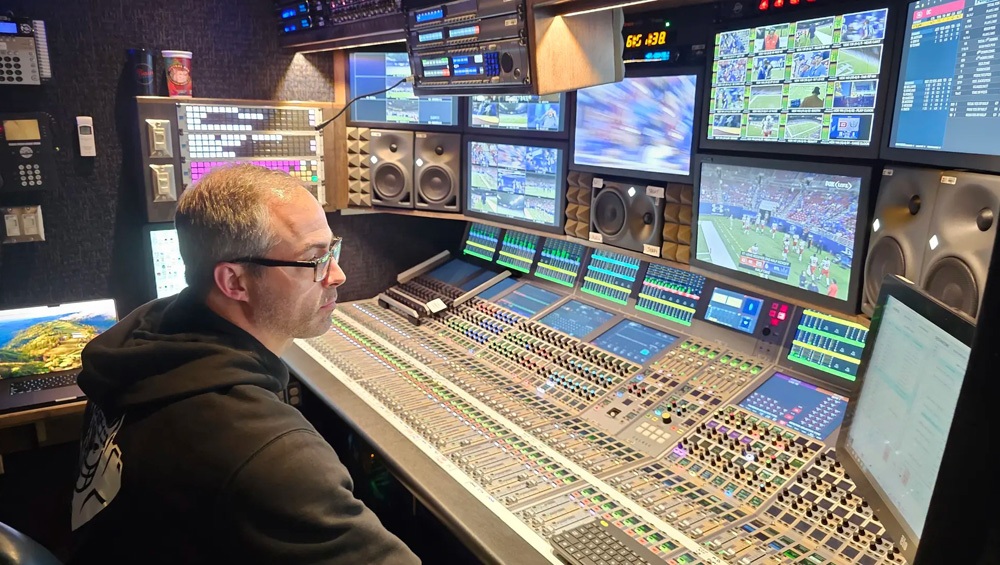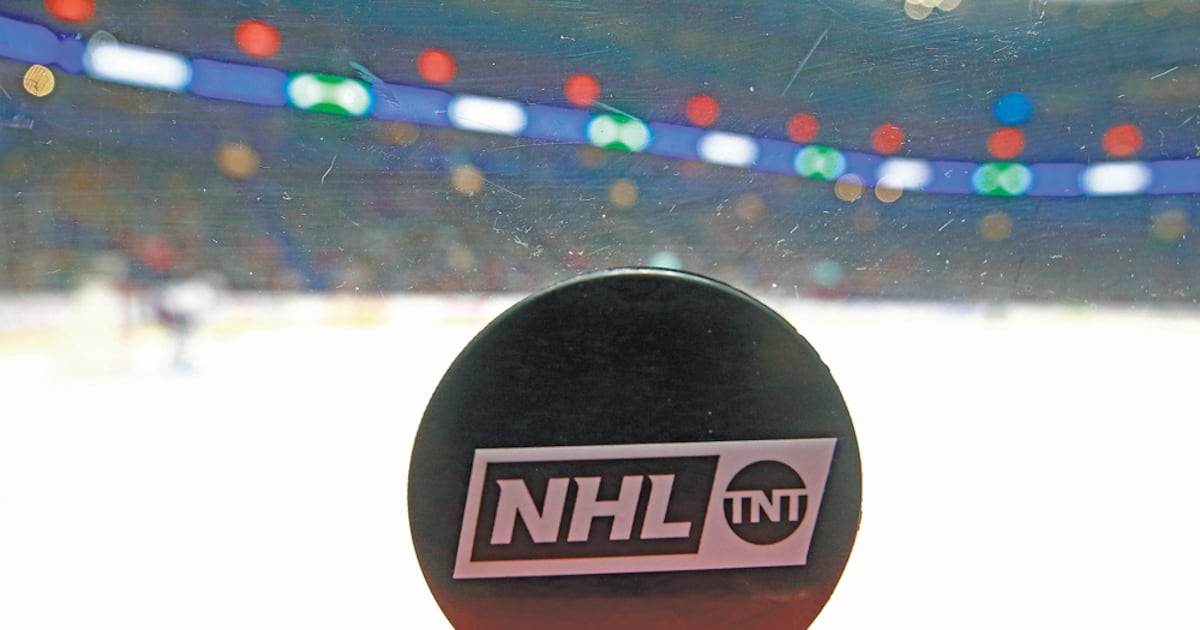Technology
Why This Tiny Wearable Beats a Fitness Watch
Everyone’s tracking something these days. Runners log their mileage, Pilates girls chart every burn and breath, and even deep sleep is tracked and graphed. But does fitness tracking have to look like clunky bricks strapped to our wrists? Enter the smart ring: a minimalist’s answer to maximalist tracking. It does everything your chunky fitness watch […]

Everyone’s tracking something these days. Runners log their mileage, Pilates girls chart every burn and breath, and even deep sleep is tracked and graphed. But does fitness tracking have to look like clunky bricks strapped to our wrists?
Enter the smart ring: a minimalist’s answer to maximalist tracking. It does everything your chunky fitness watch can—only it looks better.
RELATED: The Best Indoor Rock Climbing and Bouldering Spots That Fitness Influencers Visit
The Tiny Tracking Titan
Small but mighty, the smart ring is wearable technology stripped down to its essence. It’s a slender band that tracks your body’s vital signs and more, all without the bravado of traditional fitness devices.

Don’t let its petite size fool you. Beyond their small, elegant exteriors lurk sensors that measure it all: heart rate, oxygen saturation, sleep quality, blood oxygen levels, and even stress markers. Unlike your regular fitness watch that demands your (and everyone else’s) gaze everywhere you go, the ring collects your data without the wristwear theatrics.
Who’s leading this new era of under-the-radar wellness tech? Brands like Ōura, Ultrahuman, Samsung Galaxy, and RingConn have taken the concept in their own terms.
For the Tech-Obsessed Who Hate Looking Techy
We don’t blame the Garmin and Apple Watch loyalists because these techy watches do more than track your steps. Need to answer a text while running a 10K? Done. Want to change a song while lifting? Tap away. These gadgets do it all.

However, a lot of fitness tech feels like it wasn’t designed with you in mind. It skews bulky, masculine, and utility-first. For the rest of us who want to stay in sync with our bodies without the additional tech, the smart ring makes a quieter case. It’s unobtrusive, pared down, and designed to integrate itself into your life, not interrupt it.
Finally, Wellness Tech That Matches Your Outfit
You’ve put together the perfect ensemble—pressed poplin, tailored trousers, and the perfect heel. Then comes your clunky watch—loud, bulky, and out of tune. This alone can undo hours of styling in a second.
The smart ring, on the other hand, knows its place. We argue it’s the only piece of wellness tech that understands the rules of fashion.

With finishes in polished gold, rose gold, brushed titanium, and matte black, it slips in seamlessly with your Cartier stack or vintage emeralds. Counting your REM cycles shouldn’t come at the cost of ruining a perfectly good outfit, and smart rings know this well.
That oversized smartwatch may track your heartbeat, but it doesn’t always know rhythm or style. Wear a smart ring instead; it’s the one piece of tech that understands discretion is the height of chic.
Featured Image and Photos: ŌURA (via Instagram), ULTRAHUMAN, GARMIN, ŌURA, RINGCONN, and SAMSUNG (via website)
Technology
Academy Sports Is ‘Saving’ Sales With New In-Store Tech
Academy Sports + Outdoors has made notable tech investments that have enabled store associates to better help shoppers and drive sales at the same time. In Tuesday’s conference call to Wall Street after posting first-quarter results, company CEO Steve Lawrence said, “We, like most people in our business have been dealing with the fluid situation [regarding […]

Academy Sports + Outdoors has made notable tech investments that have enabled store associates to better help shoppers and drive sales at the same time.
In Tuesday’s conference call to Wall Street after posting first-quarter results, company CEO Steve Lawrence said, “We, like most people in our business have been dealing with the fluid situation [regarding tariffs]. It’s created a lot of complexity in how we forecast and manage our business on a day-to-day basis.”
While there have been adjustments in sourcing and supply chain, such as moving the production of goods out of China and working with vendor partners on strategies, as well as a look at capital allocation, it’s the company’s technological investments that are improving the customer experience at both the store level and online.
“We would attribute the momentum we’re starting to build in the business to the solid progress we’re making against our long-term objectives and goals,” the CEO said, adding that one of those goals is the expansion of its store base. “We’ve thoughtfully slowed the pace of signing deals for 2026 new stores. This will allow us to get a better handle on how the current tariff situation will impact construction costs moving forward,” he explained. “At this point, we don’t expect it to change the overall number of new stores, but it will shift the timing of openings that were originally targeted for Q1 into Q2 or Q3.”
Lawrence said work in the first quarter was focused on streamlining and improving the internal search functionality of Academy’s website. At the same time, it also has grown its aisle offering with an expanded assortment online that’s being supported through drop-shipping.
The big change has been the addition of handheld devices, which have kiosk functionality integrated into them.
“With this new capability, if a customer cannot buy something in a store and we own it somewhere in the chain, we can save the sale and get the customer what they need by shipping it to their home or to their closest store for both pickup, whichever is most convenient for them,” he said. “As stores have started to use this new technology, we’re seeing their save-to-sale revenue increased 900 percent on average per store.”
Another technological enhancement that improves the shopping experience has been the rollout of RFID scanners to all stores. The project — including the addition of the handheld devices for store associates — began in the spring and was completed at the end of May.
“Simplistically, we’re leveraging RFID chips already embedded in products with key brands such as Nike, Jordan and Adidas,” he said. Academy piloted the technology in 70 stores last year, finding that the use led to a 20 percent improvement in store level inventory accuracy.
“Rolling this technology to all stores will help improve our in-stocks, which ultimately will lead to increases in conversion. As we move through 2025, we expect to add more brands for regular RFID accounts, such as Levi’s, Under Armour, Columbia, Brooks and Puma,” Lawrence said. “Looking into next year, our goal is to embed RFID tags in most of our private label products, along with working with other national brand suppliers to follow suit where it makes sense.”
He also said that when Academy launched the Jordan brand in 145 doors and online on April 23, the specialty chain for the first time cross-merchandised apparel, footwear and accessories together by gender into a “branded shop concept.” So far, the initial reaction from customers has been strong and the brand is tracking ahead of initial sales plans. With the planned expansion of key items, such as cleats for football season and launching Jordan in all stores later this summer, “We anticipate the Jordan brand will be a Top 20 brand for us by the end of the year,” Lawrence told analysts.
Another plus for the retailer has been its new loyalty program, which the CEO said helps to drive value for the consumer. “We’re planning to add an additional 2 million customers to myAcademy Rewards in 2025, which should take us to over 13 million members by yearend. Growing our loyalty program membership will drive growth for us both now and in the long-term,” he said, noting that the more engaged customers tend to “shop Academy two to three times more in a year than an average customer and spend four to five times more on an annual basis.”
Academy has been working with suppliers on a case-by-case basis — its branded partners each have a different exposure to tariffs based off their unique supply chains — and believes it has mitigated the impact from tariffs. Lawrence did say that if reciprocal tariffs at the higher levels were to go back into place, such as the 145 percent for China, “prices are going up virtually on everything.” And while the company’s goal is to maintain its value positioning, he said a return to higher levels would likely result in some price increases to offset margin erosion.
In a telephone interview, Matt McCabe, executive vice president and chief merchandising officer, said that customers have been “very receptive” to the Jordan brand, which is “exceeding our plan since the launch date, and we expect that to really take dividends as we head towards back-to-school.” He said it was too early to tell how much of the selling can be attributed to the growing traffic from the higher-income, trade-down customer.
McCabe also said that what has been driving traffic over the past few quarters “has been the upgrade to the retailer’s assortment mix to include more better and best level product.” That includes the retailer selling brands such as Brooks, and the higher-end Nike footwear, as well as growing its presence in running, in both the sports and recreation options.
And while retailers sometimes pull back on initiatives given the uncertainties in the retail landscape, McCabe said that’s not the case with Academy. “In terms of new initiatives to drive our business, we haven’t pulled back on that at all,” he said, adding that in the case of the Jordan Brand, “we are still full steam ahead.”
McCabe said Academy has a “really strong, softlines business, both in apparel and footwear. Footwear is actually the strongest.” He also said the expanded its Nike footprint on its sales floor by 20 percent, “where we now have vignettes where you can shop things like running and training.”
Technology
Navigating the Modern Sports Landscape
The world of sports is a relentless, ever-shifting beast, constantly redefining itself with new challenges, technologies, and fan engagements. From the thunderous roar of the crowd at a major championship to the quiet intensity of an athlete’s personalized training regimen, the essence of competition remains, but the avenues through which it’s experienced and analyzed are […]

The world of sports is a relentless, ever-shifting beast, constantly redefining itself with new challenges, technologies, and fan engagements. From the thunderous roar of the crowd at a major championship to the quiet intensity of an athlete’s personalized training regimen, the essence of competition remains, but the avenues through which it’s experienced and analyzed are transforming at an unprecedented pace. As we hurtle through 2025, several key trends are shaping the future of athletic endeavor and the profound ways we interact with it.
One of the most impactful revolutions sweeping through sports is the integration of Artificial Intelligence (AI). AI is no longer a futuristic concept but a tangible tool actively enhancing performance and strategy. Machine learning algorithms pore over vast datasets, analyzing everything from player biomechanics to opponent tendencies. This granular insight allows coaches to craft hyper-personalized training programs, optimize game-day strategies, and even predict injury risks with remarkable accuracy. Wearable tech, powered by AI, provides real-time feedback, enabling athletes to fine-tune their movements and maximize their potential. The days of purely intuitive coaching are giving way to a data-driven approach, where every sprint, every pass, every shot is meticulously analyzed to unlock new levels of athletic prowess.
The global landscape of sports is also influencing how fans engage with the games they love. The rise of digital platforms and immersive technologies like virtual reality (VR) and augmented reality (AR) are bringing the action closer than ever before. Imagine experiencing a crucial goal from the striker’s perspective in VR, or having real-time player statistics overlaid onto your stadium view via AR. This pushes fan engagement beyond passive viewership, creating interactive and personalized experiences. Similarly, the growing legality and accessibility of sports betting are adding another layer of interaction for many enthusiasts. For those looking to deepen their engagement, exploring reputable betting sites in Canada offers a legal and regulated avenue to place wagers on their favorite teams and athletes, further intensifying the excitement and personal stake in the outcome of games. This evolving relationship between fans and the sport, driven by technology and accessibility, is creating a more dynamic and interactive landscape for everyone involved.
Beyond the field of play, the mental fortitude of athletes is finally receiving the long-overdue attention it deserves. The immense pressure to perform at an elite level, coupled with constant public scrutiny and the demanding travel schedules, can take a significant toll on mental well-being. Organizations and teams are increasingly investing in comprehensive mental health support systems, recognizing that a healthy mind is as crucial as a healthy body for sustained success. From dedicated sports psychologists to peer support programs, the stigma surrounding mental health in sports is slowly but surely eroding, paving the way for athletes to openly seek help and prioritize their psychological well-being. This holistic approach to athlete development is not just about performance; it’s about fostering resilient individuals capable of navigating the highs and lows of a high-stakes career.
Looking ahead, the evolution of sports promises to be as thrilling as the games themselves. We can anticipate even more sophisticated AI applications, pushing the boundaries of human performance and strategic innovation. Fan engagement will continue to become more immersive and personalized, blurring the lines between spectator and participant. As the world of sports continues to embrace technological advancements and prioritize athlete well-being, the future holds endless possibilities for how we play, watch, and connect with the universal language of competition. The arena is truly ever-evolving, and the game is just getting started.
Technology
Halo Sports CEO on future of tech in sports
© 2025 Fortune Media IP Limited. All Rights Reserved. Use of this site constitutes acceptance of our Terms of Use and Privacy Policy | CA Notice at Collection and Privacy Notice | Do Not Sell/Share My Personal InformationFORTUNE is a trademark of Fortune Media IP Limited, registered in the U.S. and other countries. FORTUNE may receive […]

© 2025 Fortune Media IP Limited. All Rights Reserved. Use of this site constitutes acceptance of our Terms of Use and Privacy Policy | CA Notice at Collection and Privacy Notice | Do Not Sell/Share My Personal Information
FORTUNE is a trademark of Fortune Media IP Limited, registered in the U.S. and other countries. FORTUNE may receive compensation for some links to products and services on this website. Offers may be subject to change without notice.
Technology
UFL Conference Championship Sees Fox Sports Continue AI, 5G Innovation
UFL Conference Championship Sees Fox Sports Continue AI, 5G Innovation – TV News Check Home » UFL Conference Championship Sees Fox Sports Continue AI, 5G Innovation Link 0

Technology
What WBD’s divorce means for sports media.
In a landmark day for media, Warner Bros. Discovery proclaimed it will split into separate entities, breaking up its global networks (including TNT Sports and Bleacher Report) from its streaming and studios properties. The deal, expected to close mid-2026, isn’t unexpected — but the timing is. “It seemed to have been well telegraphed that they […]

In a landmark day for media, Warner Bros. Discovery proclaimed it will split into separate entities, breaking up its global networks (including TNT Sports and Bleacher Report) from its streaming and studios properties.
The deal, expected to close mid-2026, isn’t unexpected — but the timing is.
“It seemed to have been well telegraphed that they were going to go down this path,” said Naveen Sarma, S&P Global’s managing director. “The timing of the announcement was a bit of a surprise. We thought it would happen later this year.”
The majority of WBD’s $37 billion debt will head to Global Networks, helmed by the company’s new president and CEO, Gunnar Wiedenfels (current WBD CFO). WBD CEO David Zaslav will run the streaming and studios business.
“They’re trying to manage the decline of linear television and the ability to get the streaming/studio business sustainable,” said Sarma. “If they think that next year is the right time that they’ll be cash-flow break-even on that business, maybe that’s the way they did the math, because clearly linear is declining at a much more rapid rate than we thought six months ago.”
The linear business (Global Networks) will keep the company’s sports rights, which now includes properties like the NCAA Men’s Basketball Tournament, NHL, NASCAR, Roland-Garros, MLB, Big East basketball, Unrivaled and a sublicensing agreement with ESPN for the College Football Playoff. Those properties primarily air across TNT, TBS and truTV.
“I would call cable the soon-to-be-forgotten stepchild of the different broadcast distribution menus,” said Sarma. “If you’re a sports league, you want to be on broadcast networks, because you get the broadest reach. When you think of tonnage, you really want to be on streaming. That used to be cable.”
Added Sarma: “It sounded like sports was going to go on HBO Max, but how is that going to benefit the new cable ‘SpinCo’? It isn’t, other than the fact they may get [carriage] fees. That puts them in a really tough position.”
The companies will have one advertising sales team that will work across both entities and there will also be content-sharing agreements that allow programming to be shared across both platforms.
What does the future hold?
What Zaslav announced today might look different down the road, especially when it comes to sports.
“[WBD] made a comment about how sports was going to stay with the linear TV business, but then decisions would be made down the road,” said Sarma. “I’m not sure what that meant. Does that mean that they put it on their own streaming service or they decide to walk away from it eventually?”
The WBD breakup comes after Comcast/NBCUniversal made its own moves into two separate companies, though that split may be better overall than WBD’s. “Comcast is still keeping two of the better assets,” said Sarma, pointing to NBC’s broadcast network and the Bravo library (which includes the cash-printing “Real Housewives” franchise).
Where WBD might have a bit of an “advantage” is the global portfolio and sports rights overseas, which is not experiencing the same declines in viewership or cord-cutting as in the U.S.
“In theory, it’s a better, more diversified business, which in theory should have better results because advertising overseas isn’t falling off a cliff,” said Sarma. “The metrics for the Warner linear TV business — advertising is dropping in double digits. They’re losing a billion dollars a year in EBITDA. You’d think with the diversification the numbers would be better, but they’re clearly not very good.”
For other large media companies, don’t expect to see a similar split with Disney and ESPN, though it could remain a possibility for Paramount if the Skydance Media merger closes. “CBS is probably a keeper, but the rest of the linear networks could do something similar,” said Sarma.
Technology
ZetrOZ Systems Supports the Next Generation of Physician-Scientists with Sponsorship of the Orthopaedic Foundation’s Medical Immersion Program
The inventor of sustained acoustic medicine and the sam® wearable ultrasound technologies support students at an internationally known summer program and funds student and professional research through its STEM Scholarship Program. TRUMBULL, Conn., June 10, 2025 (Newswire.com) – ZetrOZ Systems, inventor of sustained acoustic medicine and the sam® wearable ultrasound device, is supporting the next […]

The inventor of sustained acoustic medicine and the sam® wearable ultrasound technologies support students at an internationally known summer program and funds student and professional research through its STEM Scholarship Program.
TRUMBULL, Conn., June 10, 2025 (Newswire.com)
–
ZetrOZ Systems, inventor of sustained acoustic medicine and the sam® wearable ultrasound device, is supporting the next generation of medical science through its sponsorship of the Orthopaedic Foundation’s Manhattan Medical Immersion Camp, a world-class hands-on program for aspiring physicians and medical researchers.
The Orthopaedic Foundation created the camp to provide high school and college students with the opportunity to explore a broad spectrum of medical specialties and alternative fields within healthcare, including biomedical engineering and medical devices.
ZetrOZ Systems CEO George K. Lewis, PhD, a biomedical engineer, is a member of the Foundation’s board of directors and has served on the faculty of the Medical Immersion Camp. “It is an honor to be part of the Orthopaedic Foundation’s Medical Immersion Camp and to be able to show these ambitious students how technological innovations like sustained acoustic medicine evolved out of the lab and how the sam® devices are changing the way we treat soft tissue injuries,” Lewis said.
Sustained acoustic medicine is a long-duration, continuous, multi-hour, high frequency ultrasound treatment that reduces inflammation, increases blood vessel diameters, and improves blood flow. That increases oxygenated hemoglobin at the site and removes cytokine enzymes and cellular waste, with the result of more rapid healing and reduced pain.
The treatment has been extensively studied in over 30 clinical trials for treating chronic soft tissue injuries, and through millions of treatments provided annually to patients across the United States.
Dr. Stephanie Petterson, the Orthopaedic Foundation’s director of research and clinical education program director. “One of the goals of the Medical Immersion Camp is to have students examine the field of medicine from many perspectives, including regenerative and sports medicine and physical therapy,” she said. “Sustained acoustic medicine is an important, emerging treatment in those fields, helping patients recover without surgery and or the use of potentially addictive pain medication.”
The technology behind ZetrOZ Systems’ sam® wearable ultrasound devices is defined in 48 U.S. and global patents and has been cleared by the U.S. Food and Drug Administration for home use in treating soft-tissue injuries.
ZetrOZ Systems is also supporting medical students and professionals with its second $20,000 STEM Scholarship Program. To help this generation of researchers achieve their goals, ZetrOZ Systems is providing four $5,000 scholarships to students or healthcare professionals in support of their educational or research expenses.
Applicants are required to write a 1,200-word essay on the global healthcare advancements in healing soft tissue injuries, addressing new medical technologies, mechanobiology applications and emerging clinical research trends worldwide, and a 250-word letter on their plans for the scholarship funds should they be selected as a recipient.
Applicants should submit those written pieces, as well as a current transcript of undergraduate and/or graduate studies and two professional references, to info@samrecover.com by July 31, 2025. Winners will be announced in September and October.
ZetrOZ Systems’ support of healthcare students and researchers aligns with its mission of developing innovations in medical science. For more information on ZetrOZ Systems and the revolutionary sam® wearable ultrasound device, please visit https://zetroz.com/ and www.samrecover.com.
For more information on the Orthopaedic Foundation, please visit https://ofals.org/.
About ZetrOZ Systems
ZetrOZ Systems is leading healing innovations in sports medicine, developing wearable bioelectronic devices to deliver sustained acoustic medicine (sam®). Researched and funded by the federal government, ZetrOZ is built on the proprietary medical technology of 48 patents and is the exclusive manufacturer and developer of the sam® product line, designed to treat acute and chronic musculoskeletal conditions.
About the Orthopaedic Foundation
Born of the need to promote and encourage research and education in the field of orthopaedics and sports medicine, the Orthopaedic Foundation was established in 2002 with a focus on innovation to manage osteoarthritis and other musculoskeletal diseases, prevent injury to individuals across the spectrum of activity, and develop minimally invasive treatments with shorter recovery times, to keep people active and pain-free.
Source: ZetrOZ Systems
-

 Professional Sports3 weeks ago
Professional Sports3 weeks agoJon Jones answers UFC retirement speculation as fans accuse champion of 'holding the belt …
-

 NIL2 weeks ago
NIL2 weeks ago2025 NCAA Softball Tournament Bracket: Women’s College World Series bracket, schedule set
-

 Motorsports3 weeks ago
Motorsports3 weeks agoWhy IHOP Rode With Dale Earnhardt Jr. In Amazon NASCAR Debut
-

 Health5 days ago
Health5 days agoOregon track star wages legal battle against trans athlete policy after medal ceremony protest
-

 College Sports1 week ago
College Sports1 week agoIU basketball recruiting
-

 Professional Sports5 days ago
Professional Sports5 days ago'I asked Anderson privately'… UFC legend retells secret sparring session between Jon Jones …
-

 Rec Sports2 weeks ago
Rec Sports2 weeks agoJ.W. Craft: Investing in Community Through Sports
-

 Youtube3 weeks ago
Youtube3 weeks agoAnt greets A-Rod & Barry Bonds before Game 3 ⚾
-

 Professional Sports5 days ago
Professional Sports5 days agoUFC 316 star storms out of Media Day when asked about bitter feud with Rampage Jackson
-

 Rec Sports2 weeks ago
Rec Sports2 weeks agoScott Barker named to lead CCS basketball • SSentinel.com
































